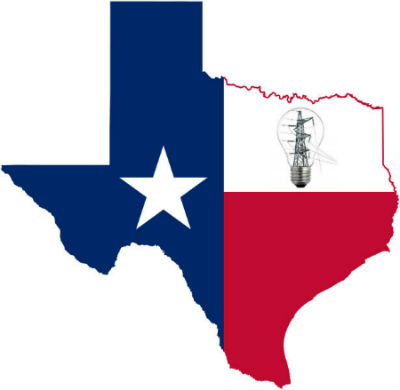Electricity Prices in Texas in 2016

Texas electricity has been deregulated since 2002, meaning that for over a decade, millions of Texans across the state have enjoyed the power of choice for their electricity supply. Shopping for energy? Find out everything you need to know about the cost of electricity in Texas here, including average historical prices, price forecasts, and how to pay less for your electricity.
The Price of Electricity per Kilowatt-hour in Texas
Find out more Learn about what factors affect the price of electricity
While electricity rates in Texas are slightly lower than the national average, the famous phrase "Everything's bigger in Texas" still applies when it comes to the average annual Texas household power bill! Hot Texan summers make average electricity consumption 26% higher than the national average, and the average Texas household spends about $1,801 per year (or about $150 per month), making Texas electricity costs some of the largest in the country.
- Looking to Save Energy?
- 15 Awesome Ways to Save on Your Energy Bills
- How to be Smart With Your Appliance Use
- Vampire Energy - what it is and how to avoid it
- How to Stay Cool Without Heating up Your Summer Power Bills
- 10 Ways to Winterize Your Home
How Does Texas Compare? Price of Electricity by State
As previously mentioned, average Texas electricity prices are slightly below the national average. What's more, with electricity markets deregulated in the state, you can shop around and compare the plans offered by retail electric providers to find a low rate and save money.
| Census Division and State | October 2015 | October 2014 |
|---|---|---|
| New England | 18.37 | 17.82 |
| Connecticut | 20.05 | 20.38 |
| Maine | 14.87 | 15.82 |
| Massachusetts | 18.37 | 16.90 |
| New Hampshire | 17.73 | 18.07 |
| Rhode Island | 19.68 | 17.19 |
| Vermont | 17.44 | 17.39 |
| New Jersey | 15.55 | 15.58 |
| New York | 18.38 | 19.43 |
| Pennsylvania | 14.49 | 13.42 |
| Illinois | 13.47 | 13.52 |
| Indiana | 11.77 | 12.21 |
| Michigan | 14.59 | 14.70 |
| Ohio | 12.89 | 13.12 |
| Wisconsin | 14.87 | 13.91 |
| Iowa | 11.70 | 11.21 |
| Kansas | 12.34 | 12.78 |
| Minnesota | 12.76 | 12.35 |
| Missouri | 11.07 | 10.64 |
| Nebraska | 10.95 | 10.73 |
| North Dakota | 10.59 | 9.77 |
| South Dakota | 11.70 | 11.22 |
| Delaware | 14.40 | 14.63 |
| District of Columbia | 13.90 | 13.17 |
| Florida | 11.61 | 11.91 |
| Georgia | 11.09 | 11.42 |
| Maryland | 15.35 | 13.97 |
| North Carolina | 12.11 | 11.89 |
| South Carolina | 12.65 | 12.83 |
| Virginia | 11.52 | 11.57 |
| West Virginia | 10.98 | 9.71 |
| Alabama | 12.00 | 11.74 |
| Kentucky | 10.74 | 10.51 |
| Mississippi | 11.16 | 11.49 |
| Tennessee | 10.63 | 10.36 |
| Arkansas | 10.00 | 9.87 |
| Louisiana | 9.55 | 9.70 |
| Oklahoma | 11.12 | 10.83 |
| Texas | 11.41 | 12.07 |
| Arizona | 12.22 | 11.90 |
| Colorado | 11.74 | 11.81 |
| Idaho | 10.32 | 10.20 |
| Montana | 11.29 | 10.72 |
| Nevada | 12.99 | 13.21 |
| New Mexico | 12.71 | 12.67 |
| Utah | 10.58 | 10.16 |
| Wyoming | 11.56 | 11.14 |
| California | 14.98 | 13.35 |
| Oregon | 10.93 | 10.78 |
| Washington | 9.41 | 8.80 |
| Alaska | 20.62 | 20.03 |
| Hawaii | 28.22 | 36.17 |
| U.S. Total | 12.73 | 12.60 |
Source: EIA
Note: these figures are for the month of October in 2014 and 2015 only, and are not annual averages
Texas Electricity Prices Over Time
Texas electricity prices have steadily increased over the past decade, though at a rate slower than the national average. Luckily, with the power of choice, most Texans can take control of their energy bills by comparing retail electricity supply plans and choosing from one of the many electricity providers that serve the state. Not sure if you have the power to choose? Check out our Texas city directory to find out how to start electricity service for your home and whether you can compare and choose a plan for your electricity.
Average Texas Retail Residential Electricity Prices, 2005 - 2014
Source: EIA, 2015
Electricity Price Forecast for 2016
According to the US Energy Information Administration, the average national price of electricity in 2016 is projected to stay the same as it was in 2015 (at about about 12.7 cents per kWh), but will likely rise by 3% in 2017. The EIA forecasts power prices to average 10.2 cents/kWh in the first quarter of 2016 for the West South Central region (Texas, Arkansas, Louisiana, Oklahoma).
Keep in mind, however, that the actual price of electricity per kWh will vary depending on where you live, how much electricity you consume, and may even change depending on the time of day that you use it.
Find Out More About Texas Electricity Prices
All About Fixed Rates in Texas
Everything You Need to Know About Variable Rates in Texas
Texas Prepaid Electricity Plans
Avoid the Hidden Fees: Minimum Usage Fees Explained
How to Pay Less for Electricity in Texas
Luckily, there are several things you can do to pay less for your energy if your utility bills are making you feel the pinch.
Compare Electricity Providers and Save
If you are among the 85% of the Texas population that lives within the ERCOT grid service area, (or in other words, if AEP Texas, CenterPoint Energy, Oncor, Texas-New Mexico, or Sharyland Utilities is your electric utility) you have the power to choose who supplies your electricity. This means you have a choice of how much you pay for your energy. Retail electric providers offer a variety of price and plan length options, and by taking a few minutes to shop around you may able to save on your utility bills. At Callmepower, we work with only the most reputable and affordable providers in Texas, in order to bring our customers the best plans available in the state.
Which Electricity Provider Should I Choose?
Each REP and plan has its own advantages and disadvantages. To get you started on your energy shopping adventure, check out our recommendations for how to shop for electricity in Texas. Then, take a look at our Texas supplier profiles, and find out how other customers have reviewed suppliers. Once you've decided on the plan term (month to month, 6 month, and 12 month terms are most common) and have narrowed down your choice to just a few suppliers and plans, be sure to read through the fine print of each plan, so that you know what you're getting into.
Use Less Energy, Pay Less on Your Bill
Another thing you can do to reduce your energy bills is to simply use less energy. From changing a few simple habits to making some targeted investments in energy efficiency, there are plenty of ways to save energy around the home, and reduce your monthly energy bills in the process. That being said, watch out for minimum usage fees, and changing rates based on your energy consumption, which can sometimes cancel out savings.
Not Sure Which Provider or Rate to Choose?Call us at 832-460-0233 to speak to an energy expert and find the lowest rate available in your area.
Should I Go Solar?
Increasing electricity rates are making home solar more attractive. But is it worth it? Decide for yourself by finding the answers to these questions:
- How many kilowatt-hours does your home use per month on average?
- How much roof area do you have (where you can install panels)? How much of this area is south-facing?
- How many sun hours does your home get per day (averaged over the course of the year)?
- How much can you afford to invest in offsetting your energy bill?
Make sure to check out what kinds of tax incentives are available in your area, and under what conditions you can claim them. There are a number of companies that lease solar panels, which may be an option for customers who don't want to defray up-front costs. If you're not sure whether going solar is worth it, check out Google's Project Sunroof, which might be able to help you decide whether solar panels are right for you
Moving or Switching?Call 832-460-0233 to speak to an energy expert about how to pay the lowest rate possible for your electricity supply in Texas
